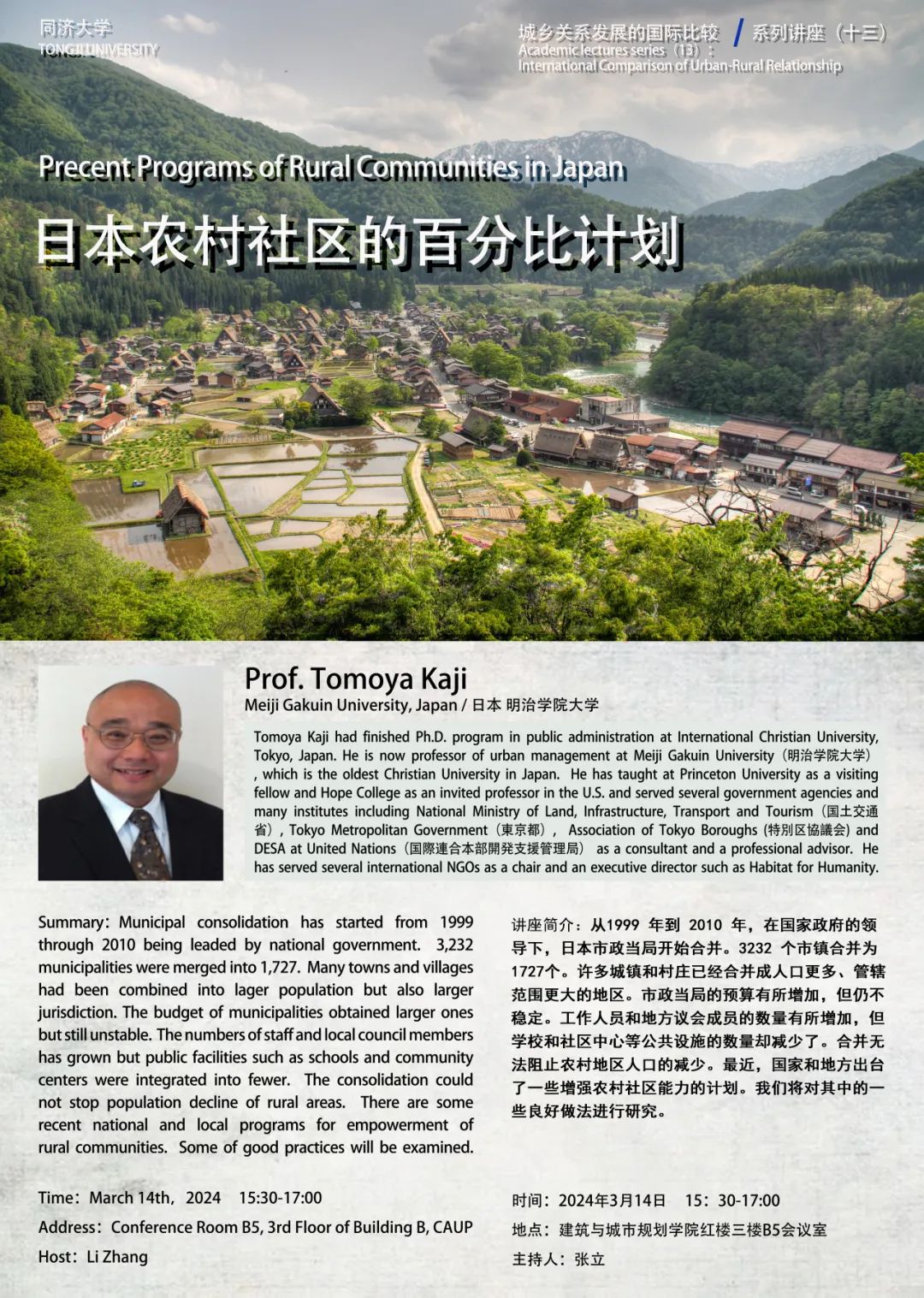
Precent Programs of Rural Communities in Japan

鍛冶智也 KAJI Tomoya Professor of Meiji Gakuin University, Japan Tomoya Kaji had finished Ph.D. program in public administration at International Christian University, Tokyo, Japan. He is now professor of urban management at Meiji Gakuin University(明治学院大学), which is the oldest Christian University in Japan. He has taught at Princeton University as a visiting fellow and Hope College as an invited professor in the U.S. and served several government agencies and many institutes including National Ministry of Land, Infrastructure, Transport and Tourism(国土交通省), Tokyo Metropolitan Government(東京都), Association of Tokyo Boroughs (特別区協議会) and DESA at United Nations(国際連合本部開発支援管理局) as a consultant and a professional advisor. He has served several international NGOs as a chair and an executive director such as Habitat for Humanity. Introduction Municipal consolidation has started from 1999 through 2010 being leaded by national government. 3,232 municipalities were merged into 1,727. Many towns and villages had been combined into lager population but also larger jurisdiction. The budget of municipalities obtained larger ones but still unstable. The numbers of staff and local council members has grown but public facilities such as schools and community centers were integrated into fewer. The consolidation could not stop population decline of rural areas. There are some recent national and local programs for empowerment of rural communities. Some of good practices will be examined.
Time
15:30-17:00, Mar 14th(Thursday)
Venue
Meeting Room B5, 3rd floor, B Building, CAUP, Tongji University
Host
Zhang Li, Tongji University, Associate Professor
 ABOUT US
ABOUT US




